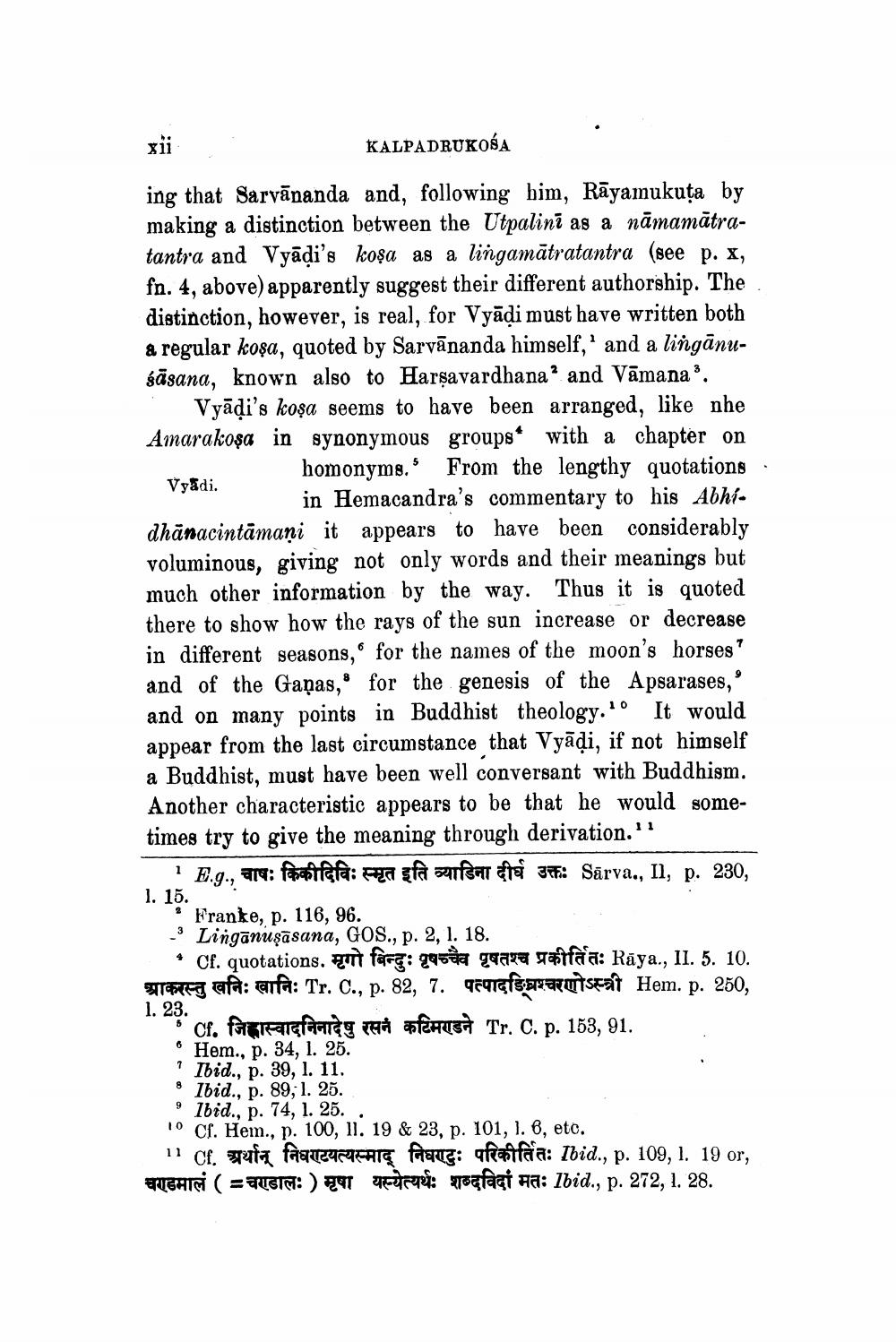________________
xii
KALPADRUKOŠA
ing that Sarvānanda and, following bim, Rāyamukuta by making a distinction between the Utpalinī as a nāmamātratantra and Vyāļi's koşa as a lingamātratantra (see p. x, fn. 4, above) apparently suggest their different authorship. The distinction, however, is real, for Vyāời must have written both a regular koşa, quoted by Sarvānanda himself,' and a lingānuśāsana, known also to Harşavardhana" and Vāmana .
Vyāļi's koşa seems to have been arranged, like nhe Amarakoşa in synonymous groups* with a chapter on
homonyms. From the lengthy quotations Vyadi.
11. in Hemacandra's commentary to his Abhí. dhānacintamani it appears to have been considerably voluminous, giving not only words and their meanings but much other information by the way. Thus it is quoted there to show how the rays of the sun increase or decrease in different seasons, for the names of the moon's horses? and of the Gaņas, for the genesis of the Apsarases, and on many points in Buddhist theology.' It would appear from the last circumstance that Vyāļi, if not himself a Buddhist, must have been well conversant with Buddhism. Another characteristic appears to be that he would sometimes try to give the meaning through derivation." 1 E.g., ar: fafafa: Fra sfansat eta git: Sārva., II, p. 230,
Franke, p. 116, 96. - Lingānuşāsana, GOS., p. 2, 1. 18.
* Cf. quotations. aut farg: ga5a guazz gaittaa: Rāya., II. 5. 10. matig afa: aifa: Tr. C., p. 82, 7. genres austat Hem. p. 250, 1. 23. *Cf. fargliigaaeg van AfHCE Tr. C. p. 153, 91. • Hem., p. 34, 1. 25. ? Ibid., p. 39, 1. 11. * Ibid., p. 89, 1. 25. 9 Ibid., p. 74, 1. 25.. 10 Cr. Hem., p. 100, 11. 19 & 23, p. 101, 1. 8, etc.
1 cf. fa fa teERTĘ falarcs: faifafa: Ibid., p. 109, 1. 19 or, ERLEHITI ( = AVETA: ) 21 strani: oafagi na: Ibid., p. 272, 1. 28.
1. 15.




